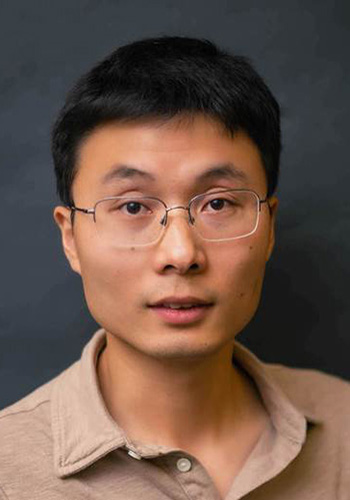Faculty

Presidential Frontier Faculty Fellow
Mingjian Wen is currently an Assistant Professor in Chemical and Biomolecular Engineering at the University of Houston (UH). He is also recognized as a Presidential Frontier Faculty Fellow at UH. Before joining the faculty at UH, Dr. Wen completed his B.S. in Chemical Engineering at Tianjin University and obtained his Ph.D. in Aerospace Engineering & Mechanics from the University of Minnesota. He also worked as a postdoctoral scholar on the Materials Project at the Lawrence Berkeley National Lab. During his academic career, Dr. Wen earned distinction by being awarded the Doctoral Dissertation Fellowship at the University of Minnesota and the Alternative Textbook Incentive Award at UH, among others. His research centers on developing data-driven and machine learning methods, applying first-principles and classical molecular simulations, and building open cyberinfrastructure to understand and design materials and chemical reactions for renewable energy applications.
The Wen Research Group works in the broad area of computational chemical and materials sciences. An overarching theme of our group is to leverage artificial intelligence, high-performance computing, and atomistic molecular simulations to understand and design new materials for renewable energy applications. We develop 1) state-of-the-art machine learning models, 2) cutting-edge automation workflows, and 3) advanced reliability analysis frameworks, and apply them to, e.g., lithium-ion battery systems and synthesis-structure-property relationships or materials.
- Graduate students: Wei-Fan Huang, Emmanuel Olanrewaju, Dale Green (co-advised with Prof. Lars Grabow)
- Undergraduate students: Bobby Brown, Chris Mobley, Heer Loungani
- Postdoctoral research associates: Santosh Adhikari, Jin Dai
Alternative Textbook Incentive Award, University of Houston, 2023
Presidential Frontier Faculty Fellow, University of Houston, 2022
Doctoral Dissertation Fellowship, University of Minnesota, 2018
Selected Publications
- Wen: M Wen, EWC Spotte-Smith, SM Blau, MJ McDermott, AS Krishnapriyan, KA Persson, “Chemical reaction networks and opportunities for machine learning.” Nature Computational Science, 3, 12-24, https://doi.org/10.1038/s43588-022-00369-z, 2023
- M Wen, SM Blau, X Xie, S Dwaraknath, and KA Persson, Improve machine learning performance on small chemical reaction data with unsupervised contrastive pretraining.” Chemical Science, 13, 1446-1458, https://doi.org/10.1039/D1SC06515G, 2022
- Z Shui, M Wen, DS Karls, IA Nikiforov, EB Tadmor, and G Karypis, “Injecting domain knowledge from empirical interatomic potentials to neural networks for predicting material properties.” Advances in Neural Information Processing Systems 35 (NeurIPS), https://doi.org/10.48550/arXiv.2210.08047, 2022
- M Wen, SM Blau, EWC Spotte Smith, S Dwaraknath and KA Persson, “BonDNet: a graph neural network for the prediction of bond dissociation energies for charged molecules.” Chemical Science, 12, 1858-1868, https://doi.org/10.1039/D0SC05251E, 2021
- M Wen, Y Afshar, RS Elliott, and EB Tadmor, “KLIFF: A framework to develop physics‑based and machine learning interatomic potential,” Computer Physics Communication, 108218, https://doi.org/10.1016/j.cpc.2021.108218, 2021
- M Wen and EB Tadmor, “Uncertainty quantification in molecular simulations with dropout neural network potentials.” npj Computational Materials, 6, 124, https://doi.org/10.1038/s41524-020-00390-8, 2020
- M Wen, EB Tadmor, “Hybrid neural network potential for multilayer graphene.” Physical Review B, 100, 195419, https://doi.org/10.1103/PhysRevB.100.195419, 2019
- M Wen, S Carr, S Fang, E Kaxiras, and EB Tadmor, “Dihedral‑angle‑corrected registry‑dependent interlayer potential for multilayer graphene structures.” Physical Review B, 98, 235404, https://doi.org/10.1103/PhysRevB.98.235404, 2018